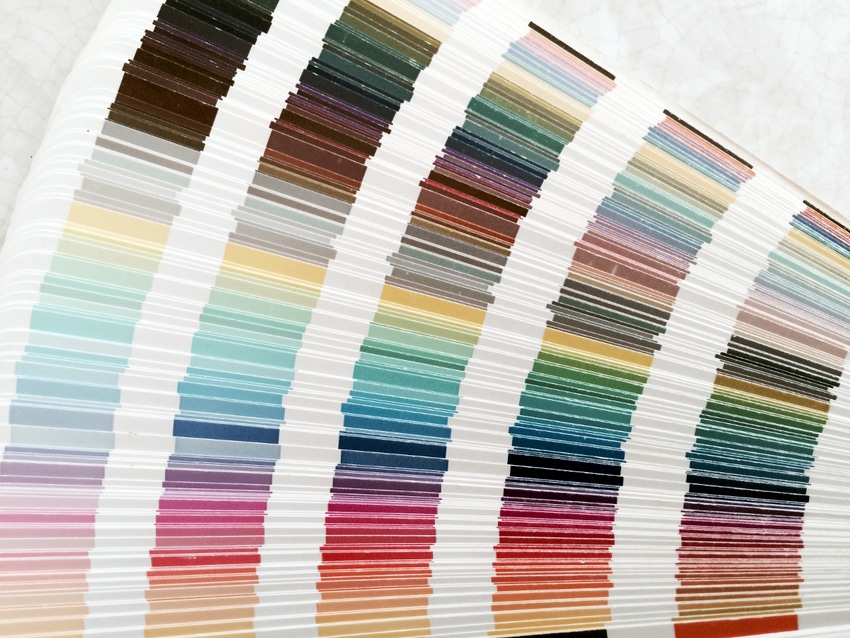Combat counterfeiting with packaging design and color consistency
February 17, 2016

People often talk about the importance of brand consistency for consumer retention and sales. However, a company’s logo, colors and packaging can also help fight counterfeiting. They are key attributes that consumers use in identifying brands and making purchasing decisions at the shelf.
Counterfeiting has become big business over the last few decades. According to the International Chamber of Commerce the projected value of global trade in counterfeit and pirated goods in 2015 was $1.77 trillion. That’s right—trillion. Counterfeit or gray market goods range from designer handbags to automotive parts to pharmaceuticals. It seems that no product is immune from the threat.
Counterfeiting isn’t just about lost revenue for brand owners; it can damage a brand’s image and lead to serious health and safety concerns for consumers. A few decades ago, spotting a fake was as easy as knowing the difference between Prada and Prado. But today it can be much harder.
Take for example over-the-counter and prescription medicine—in recent cases of counterfeit drugs, the product packaging looked nearly identical but listed inaccurate ingredients or was missing information such as lot numbers.
How can brand owners and product designers protect against counterfeit goods?
Incorporating security solutions in product packaging is becoming an important anti-counterfeiting measure. In fact, Allied Market Research (AMR) reports that the global market for anti-counterfeiting packaging is expected to reach $142.7 billion by 2020 for all end-use markets, including pharmaceuticals, foods and beverages.
According to AMR, holograms will remain a leading authentication technology while radio frequency identification (RFID) technology will continue to see high growth rates. Product traceability systems, smart labels and smart caps are also on the rise to help track product safety and quality through the production process and supply chain (where counterfeiting can occur).
There are a number of other ways packaging design can help combat counterfeiting. Unique packaging can help a brand stand out on the shelf and make it more difficult to counterfeit. Custom packaging that incorporates new materials or shapes is harder to replicate. Packaging can also include other forms of authentication, such as bar codes or quick response (QR) codes, that help with both counterfeiting and consumer engagement. With a smartphone, a consumer can scan a code, verify the manufacturer of a product and be directed to a brand owner’s website for more information. In this way, the brand can build consumer trust and has an opportunity to engage with a customer online.
In the pharmaceutical market, where an estimated 10% to 30% of drugs from developed markets are counterfeit, personalized packaging on medication is a growing option for manufacturers. Medication will come labeled to the individual with warnings based on the person’s medical history and existing medications. The label and instructions will be produced in the typeface making it easier to read – for example, an elderly or a near-sighted person may receive labels printed in large print.
The importance of brand consistency
People often talk about the importance of brand consistency for consumer retention and sales. However, a company’s logo, colors and packaging can also help fight counterfeiting. They are key attributes that consumers use in identifying brands and making purchasing decisions at the shelf.
Getting color right on logos or brand packaging can help protect consumers from being duped. A Pantone Color Institute study found that 97% of adults will reach past the first product on the shelf. Over half of the respondents said they reach past the first product if the package is discolored. In the same study, two-thirds of adults stated they question the quality of the product if the packaging is discolored.
Placing a high importance on color consistency across all branding, packaging and digital components can build brand equity and fight counterfeiting. Chesapeake, a global producer of consumer packaging, works with some of the world’s leading pharmaceutical companies and understands the importance of color consistency in product packaging.
According to Mike Cheetham, CEO at Chesapeake, “With counterfeiting on the rise, it’s more important for brands to safeguard product integrity and assure consumer confidence. It is essential that a pack’s color is both accurate and consistent. Together with other anti-counterfeiting techniques, it will help to combat an increasingly sophisticated global threat.”
Color is part of a brand experience. Having consistent color helps consumers identify a brand and builds customer loyalty. Color inconsistencies in your product or packaging are instant red flags to a buyer that the product might be old, damaged or counterfeit.
In the war against counterfeit goods, color accuracy and consistency can be an extremely powerful tool when combined with other anti-counterfeit packaging solutions. It can also help build your brand integrity, improve the customer experience and increase customer engagement.
Shoshana Burgett, director of corporate strategy and customer insights for X-Rite, is responsible for leading the company’s voice of the customer (VOC) initiative across all industries, identifying market trends and helping the company create innovative products that support emerging customer needs. Burgett has served in a variety of roles related to print, packaging and color management since 1986. Shoshana previously held senior management roles at Xerox and has a master’s degree from Rochester Institute of Technology (RIT) in variable data technology and international business, and a bachelor degree from the School of Visual Arts.
About the Author(s)
You May Also Like


